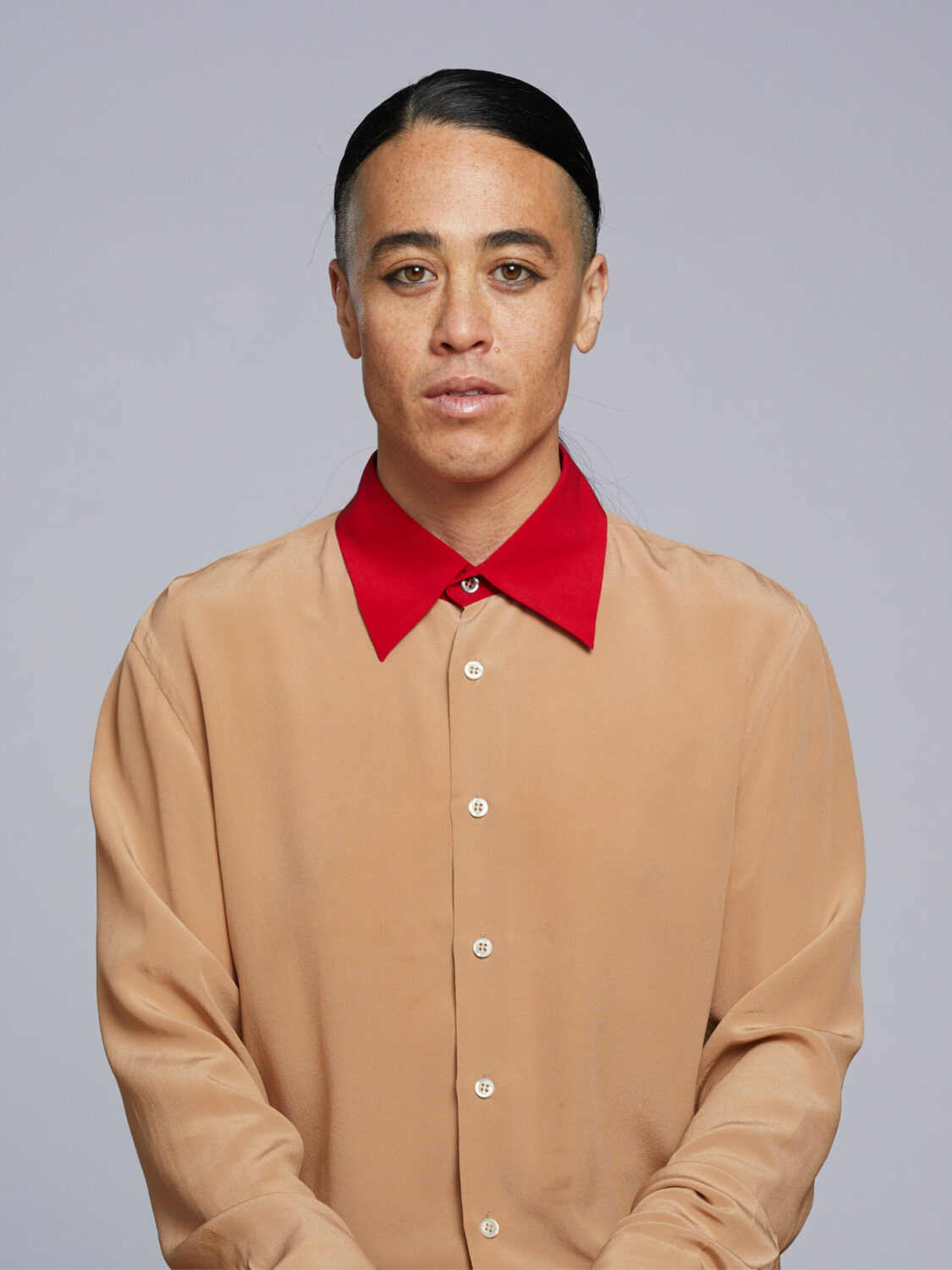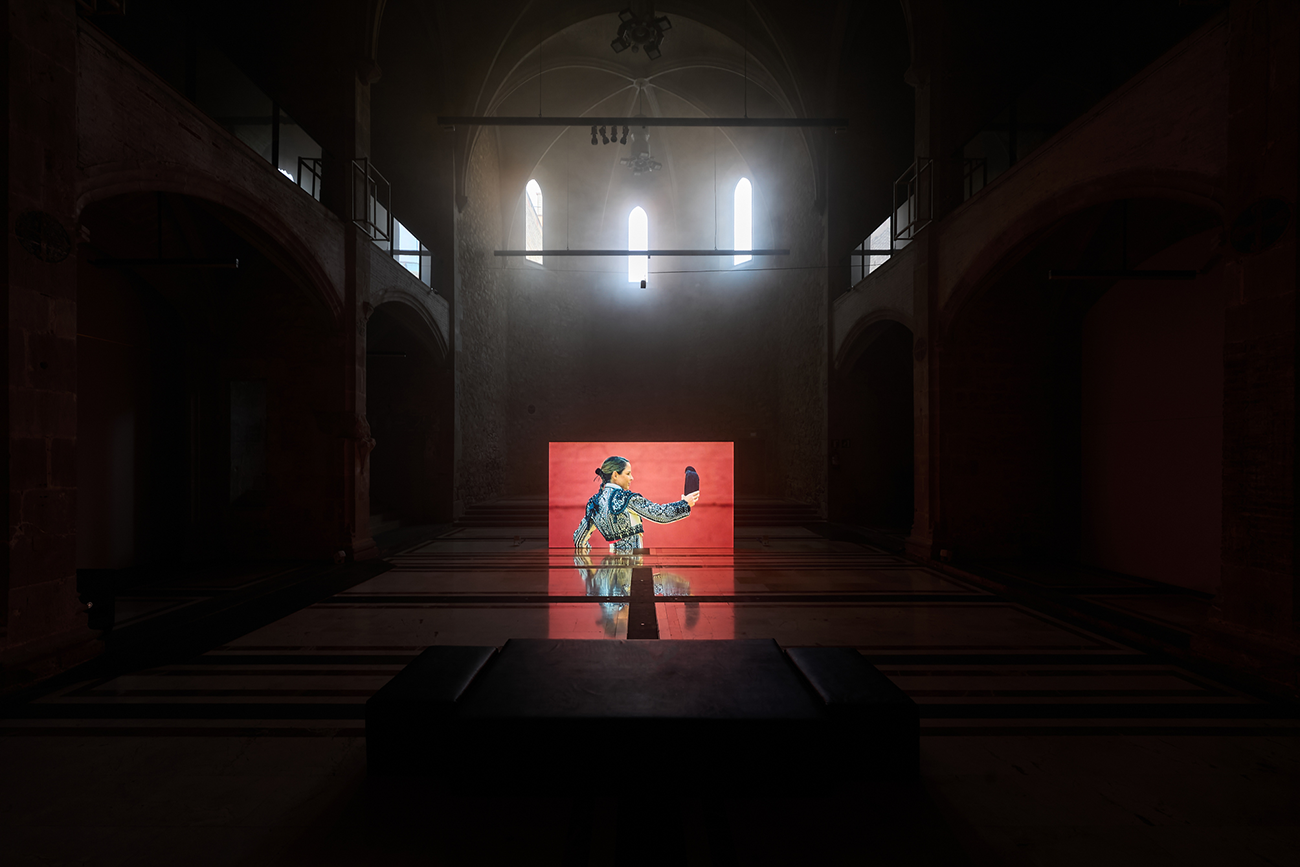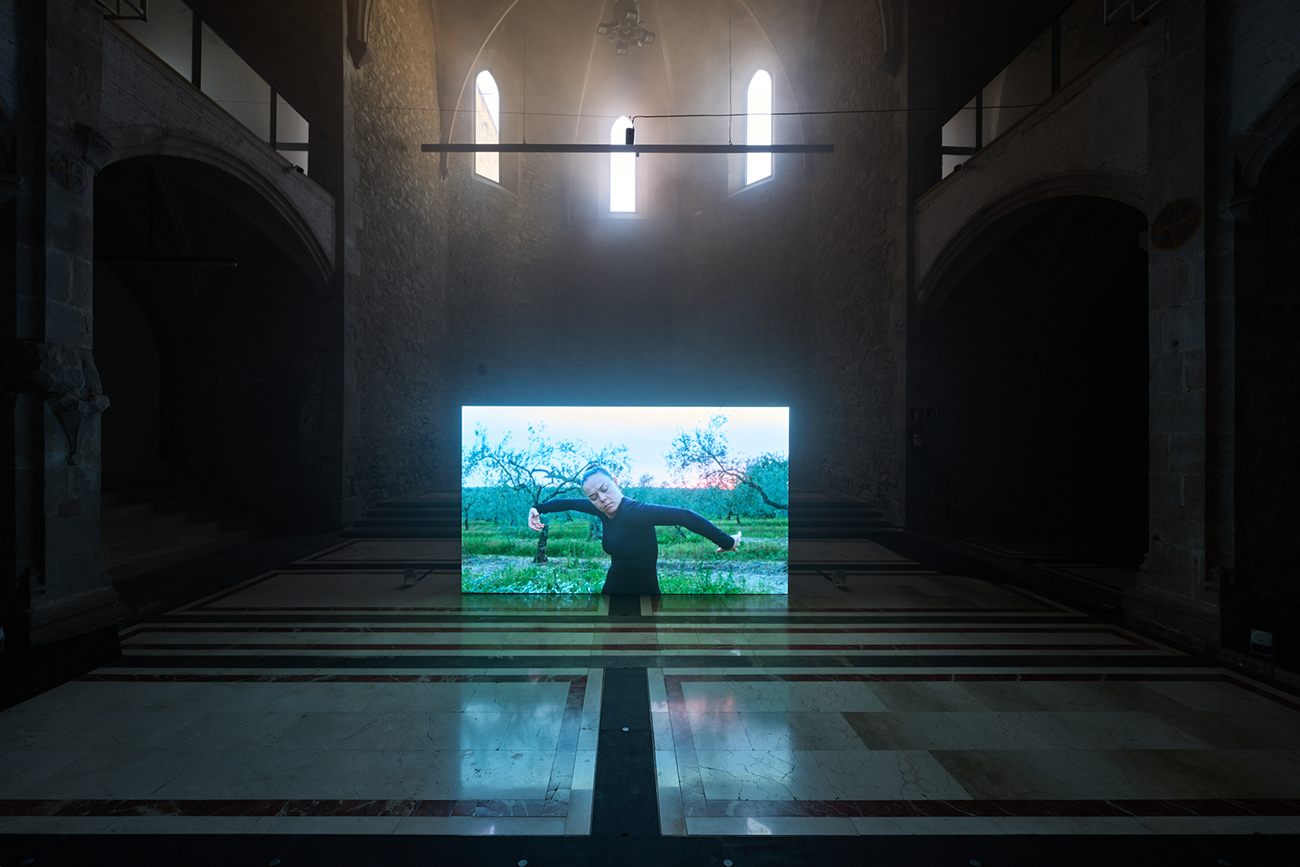Interview: Wu Tsang Revisits the Myth of ‘Carmen’ at MACBA
By Keshav AnandBased between Zurich and London, filmmaker and visual artist Wu Tsang’s work traverses genres and disciplines, oscillating and blurring the lines between narrative and documentary film, live performance, and video installation. A MacArthur ‘Genius’ Fellow, Tsang’s projects have been exhibited worldwide, including at New York’s Guggenheim Museum, Gropius Bau in Berlin, Tate Modern in London, and the Venice Biennale.
Her latest work, La gran mentira de la muerte (The big lie of death), is a multichannel sound and film installation created for MACBA’s Capella space in Barcelona. The piece delves into the poetic themes of Carmen — a story laced with issues of colonialism, race, gender, class, and criminality. Evoking the genre of horror in her cinematic interpretation, Tsang’s film features performances by Rocío Molina with José “El Oruco,” Yinka Esi Graves, Tosh Basco, and bullfighter Vanessa Montoya.
To learn more about the project, Tsang’s approach to collaboration, and where she likes to eat in Zurich, Something Curated’s Keshav Anand spoke with the artist.

Keshav Anand: What drew you to the myth of Carmen?
Wu Tsang: Carmen has been a long-time dream project — for about eight years. I have a collaborator who planted the seed and then we’ve just been researching it. About a year and a half ago I went to Seville to jump-start the more intensive research and when I went there I met a lot of people and started to get really interested in specifically how the myth of Carmen lives in this contemporary moment in Seville. There were two projects that started: one was the live opera, which we did in Zurich at the theatre where I work, and then there’s this film. Both of them are ongoing in the sense that I feel like I’m still very much immersed in this research, and have hopes of making another film.
KA: I’m curious to learn more about your explorations of death through the lens of the myth?
WT: Carmen is a story that’s very popular and it’s one of those stories I feel, even for myself when my collaborator first suggested the idea, that people think they know, and if feels so familiar. But often people don’t examine it very closely. They know the story but don’t really think about the details of it. When I started to do the research I was struck by how the music is very catchy and cheerful, but actually it’s almost like a horror story. It’s a story about the murder of a woman by a jealous, possessive man. It’s not a happy story even though the music is very joyous.
There’s a darkness to it that I kind of decided, especially in our adaptation for the opera, to foreground. We wanted to try and understand why this myth is so popular. What is it about the murder of this woman that people continue to return to as audiences, and as artists we continually adapt. Death is a theme that’s very important in the story and I think this film is focussed on the questions around her death — why does she have to die? This was kind of the question I started with.

KA: How have you approached utilising MACBA’s Capella as a space to present the work?
WT: As I mentioned, I am in an ongoing process of research, working with people in Seville, so I wasn’t necessarily planning to make this film when I started that process but when I received the invitation from MACBA and I came to visit and I saw the space, I thought it was very beautiful and also, architecturally, it offered a lot of different possibilities. I work a lot with sound and music, and especially with spatialisation, making a whole room a part of the experience. I had this idea for the potential of it. So I really make this work specifically for the Capella space in Barcelona.
KA: How did your time in Seville and the surrounding area influence the development of this project?
WT: Carmen, the opera, is a 19th century opera written by a Frenchman, Georges Bizet, and he actually never went to Spain. He made this whole opera imagining Spain. I think his imagining of Spain is very representative of a certain kind of Western European idea or fantasy of what Spain represented in the mid-19th century. It was really this kind of, and still is, particularly in the south of Spain, a representation of this edge, a non-Europeanness. It’s like a blurred space or mixed space, a space “contaminated” from Others. There’s this history with the Moors; it’s like it almost wasn’t a part of Europe.
I was struck that Bizet never went to Spain, and I thought the first thing I need to do is go there and find out what is the relation of this place to this myth. When I got there, I went on this tour — because I was working with an art foundation, TBA21, and they organised it for me — and this guide took us around and he was like, “Here’s the alleyway where Carmen and Don José fought.” And I was like, “Wait, I don’t understand what you mean. This didn’t actually happen.” And he said, “You know, we think this is where it would have happened because it matches the description of the novel.”
And I just thought to myself, this is so interesting even in the place where one might start to build a critique of the Oriental fantasy there’s also a investment in the fantasy. For economic reasons of course but also everyone starts to build their own attachments. That’s the thing that inspires me about popular mythology — people see in it what they want to see. And so I decided, now I really want to think about the myth of Carmen in Seville as it is for people that live there.
And of course, in parallel to Carmen, Seville is also a centre for flamenco. The dance music practices have a similar sense of mythmaking around them, where people have their own ideas of where its come from, what its origins are, what makes it flamenco, what is authentically flamenco. There are these stakes in who can say that it’s theirs. I wanted to bring this into the work too.

KA: How do you see your role as an artist?
WT: I think I really came to making art as a filmmaker, a documentary filmmaker, and I sort of evolved into being a visual artist. I discovered that the space of video installation was a very free space to create — you can make up the rules about how people see things, how the story is told, and what kind of space it is. You have a lot of parameters that you can play with, which is very different than a documentary, where there are a lot of predetermined formats that you have to work within. It’s more constrained. That was one part that appealed to me — I just felt like it was a space where I could speak about things in a very nuanced or poetic way but always in dialogue with documentary.
My filmmaking practice is very informed by documentary, in the sense of building relationships with people, with performers, professional and non-professional. Maybe there’s a plan about what we want to make but also that plan evolves quite a lot in the process. So the outcome is not just putting some talking heads on a screen and saying, “Now you guys tell us about Carmen,” or “Tell us about flamenco.” I want to show what the spirit is of this thing that we’re all participating in. It feels like this is a space where I can talk about things in my own terms.
KA: Reflecting on your wider practice, I wanted to talk to you about collaboration and its ongoing significance in your work.
WT: My work is hugely collaborative. I think its always interesting presenting what I do in the visual art context because I think the visual art context has this tradition of individual artists, where there’s like a big name on the wall and nobody else’s name. It’s almost like this weird moment where all the things that I do and all the activities and shared experiences get condensed into like, “Ok, here’s Wu Tsang’s exhibition,” or “Wu Tsang’s new film.”
And that’s always a bit frustrating because the way that I work is very collaborative and I try to move through that moment by thinking, what can the work do to demand the audience to see differently or open their minds a little bit to understanding this collective energy that I think is in the work. That’s always a challenge for me as an artist. And actually I think a lot of artists work collaboratively but we don’t always have the support of the institution to communicate that well to the audience.

KA: What are you currently reading?
WT: I read a lot of science fiction. The book that I just read is not a very happy book. Do you know this book called The Deluge? It’s crazy. I read it twice in a row, which I tend to do when I like things. It imagines the near future — it’s basically about the present. It imagines societal collapse in this very real and terrifying way to do with environmental destruction and people totally falling apart. So, yeah, I recommend it. [Laughs.] I’m always trying to envisage the near future, which is what draws me to science fiction, but I feel like this book is the closest thing I’ve found to being able to try and process what’s happening in our present moment. I’ll read a news headline and it’s like, the book is really happening.
And then another book I read recently that I loved, and also read twice, is Providence by Craig Willse. It’s a gay murder novel. He’s a really cool activist doing a lot of interesting things, and this is his first novel. I think he made a shift in his outward facing work, that he was sharing with the world, because he’s more of an academic writer. But he published this amazing novel — it’s fantastic and I highly recommend it to everybody.
KA: Where are your favourite places to eat in Zurich?
WT: One of my favourite restaurants that I love to go with friends is called Cantina. It’s a really delicious Peruvian restaurant. And it’s also just a really fun vibe — sometimes they’ll have a musician; they have this little room in the back where you can go if you want to be a bit more private. They make birthdays really fun. And then another place I love to take my friends is this restaurant that’s in the forest called Adlisberg. It’s almost like on a horse farm and does really fantastic Swiss food.
Wu Tsang’s La gran mentira de la muerte (The big lie of death) is open now and runs until 3 November 2024 at MACBA Museu d’Art Contemporani de Barcelona.
Feature image: Wu Tsang, La gran mentira de la muerte (The big lie of death), 2024. Tosh Basco. Photo: Bella Cutugno Argudo